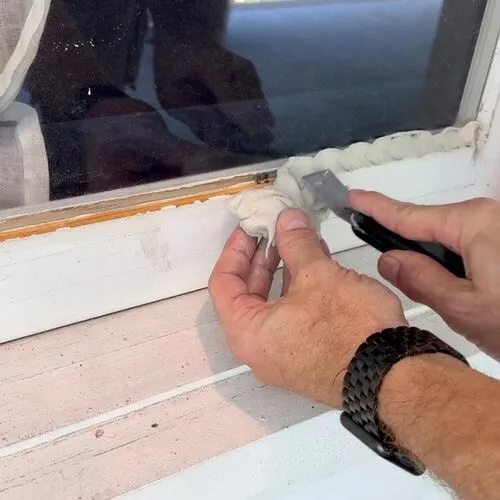Window Pane Replacement: A Comprehensive Guide
Window panes play an important role in the aesthetic appeal and functional performance of homes and buildings. Over time, window panes can suffer damage due to different elements, including weather, accidents, or general wear and tear. This post provides an extensive expedition of window pane replacement, covering the types of window panes, signs of damage, the replacement process, and maintenance tips.
Understanding Window Panes
Window panes are sheets of glass that form the transparent part of windows. They can be found in numerous types, depending on their construction and performance. Here are some typical types of window panes:
| Type of Window Pane | Description |
|---|---|
| Single Pane | A single sheet of glass, offering minimal insulation and typically found in older homes. |
| Double Pane | Include 2 sheets of glass with a sealed air space in between, providing much better insulation and energy performance. |
| Triple Pane | Similar to double panes however with 3 sheets of glass, offering exceptional insulation and sound reduction. |
| Tempered Glass | Heat-treated glass that is more powerful and more resistant to breakage, often used in locations where security is a concern. |
| Laminated Glass | Made from 2 layers of glass with a plastic interlayer, which holds the glass together upon breaking, providing safety and sound decrease. |
Signs that a Window Pane Needs Replacement
Recognizing the signs that a window pane needs to be changed is crucial for preserving the integrity and performance of your windows. Here are some common indicators:
- Cracks or Chips: Visible damage to the glass surface area can compromise insulation and safety.
- Condensation: Moisture accumulation between double or triple panes indicates seal failure.
- Drafts and Energy Loss: Noticeable drafts suggest that the window's sealing may be inadequate, resulting in higher cooling and heating expenses.
- Distortion: Warping or bending of the glass can impact exposure and looks.
- Difficulty Opening or Closing: Windows that are hard to run may suggest frame damage or misalignment.
The Window Pane Replacement Process
Changing a window pane can be a complicated task, but with the right tools, understanding, and security preventative measures, it can be achieved successfully. Here's a detailed guide to the procedure:
Preparation
- Collect Tools and Materials: Tools required include a putty knife, glass cutter, safety gloves, goggles, caulk, glazing compound, and replacement glass.
- Safety Precautions: Always use protective gear when dealing with glass to avoid injuries.
Removal of Damaged Pane
- Eliminate Window Sash: If appropriate, thoroughly eliminate the window sash from the frame.
- Eliminate Old Putty: Use a putty knife to carefully eliminate old glazing putty from around the damaged pane.
- Detach the Broken Pane: If the pane is damaged, carefully remove it from the window frame.
Installing the New Pane
- Step the Opening: Measure the opening for the new pane, guaranteeing proper dimensions.
- Cut the Glass: Using a glass cutter, cut the brand-new pane to size if needed.
- Use New Glazing Compound: Put a generous bead of glazing substance on the frame to hold the new pane in location.
- Location the New Pane: Carefully place the new glass pane onto the prepared frame.
- Protect the Pane: Press the glass into the compound, then add glazing indicate hold the glass in location.
- Seal the Edges: Apply extra glazing compound around the edges of the pane to guarantee a correct seal.
Final Touches
- Smooth the Glazing Compound: Use a putty knife to smooth the compound for a professional surface.
- Reinstall the Window Sash: If suitable, reinstall the window sash into the frame.
- Clean the Glass: Finally, tidy the glass surface for a clear view.
Upkeep Tips for Window Panes
To extend the life of window panes and keep their efficiency, routine maintenance is necessary. Here are some useful upkeep pointers:
- Regular Cleaning: Clean window panes utilizing suitable glass cleaners and soft cloths to preserve clearness.
- Check Seals and Caulking: Periodically check the seals and caulking around the windows for wear and tear.
- Repair Minor Defects Promptly: Address little chips and fractures right away to avoid additional damage.
- Control Indoor Humidity: Use dehumidifiers or exhaust fans to decrease indoor moisture levels, decreasing the opportunities of condensation between panes.
- Professional Inspections: Schedule routine examinations with a window specialist to assess the condition of your windows.
FAQs about Window Pane Replacement
What is the average cost of window pane replacement?
The expense varies substantially depending upon the type of glass, size, and labor costs. On average, homeowners can anticipate to pay in between ₤ 300 to ₤ 800 per window for replacement services.
For how long does it take to replace a window pane?
The time needed for replacement depends upon the intricacy of the job. Usually, Experienced Glazier can take anywhere from a few hours to a complete day to replace a window pane, consisting of preparation, installation, and clean-up.
Can I replace a window pane myself?
Yes, lots of house owners select to replace window panes themselves, specifically if they have basic DIY skills. Nevertheless, if you are unsure or handling extensive damage, employing a professional is a good idea.
What type of glass should I select for replacement?
The choice of glass depends upon your requirements. Double-pane glass is ideal for energy efficiency, while tempered glass is best for security. Consider your budget plan and specific requirements before deciding.
How can I guarantee the durability of my window panes after replacement?
Regular upkeep, consisting of correct cleansing, evaluations, and timely repair work, can substantially extend the life-span of window panes.
In conclusion, window pane replacement is a crucial home upkeep job that boosts both aesthetic appeal and energy performance. By acknowledging the indications of damage, following proper replacement treatments, and keeping window panes diligently, property owners can enjoy the full benefits of their windows for several years to come.

